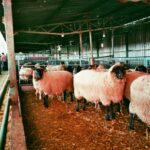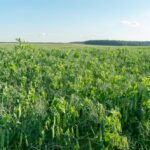In the heart of KwaZulu-Natal’s sugar belt, a quiet transformation is taking place on the farmlands once dominated by conventional practices. One sugarcane farmer, Thabo Mthembu from the Umfolozi region, has made headlines for adopting regenerative farming methods that not only improved his yields but also restored the health of his soils and reduced input costs.
Thabo’s journey offers a compelling example of how traditional farming models can evolve to meet the challenges of climate change, soil degradation, and rising operational costs—while still remaining commercially viable.
The Shift from Conventional to Regenerative
For years, Thabo followed conventional sugarcane farming methods: regular ploughing, chemical fertilisers, and burning cane before harvest. While these techniques delivered decent yields, he noticed a troubling trend. His soil was becoming hard and lifeless, water was running off instead of soaking in, and input costs were climbing every season.
“I realised I was fighting nature instead of working with it,” Thabo recalls. “Each year, I needed more fertiliser to get the same results. Something had to change.”
In 2019, after attending a workshop on soil health and regenerative farming hosted by an NGO in the region, Thabo began rethinking his entire approach. He started small, trialling regenerative techniques on a five-hectare block before expanding them across his 50-hectare farm.
Key Regenerative Practices Adopted
- Cover Cropping
Thabo introduced cover crops like cowpeas, sun hemp, and rye grass between cane cycles to prevent soil erosion, improve organic matter, and boost nitrogen levels. These crops were later mulched into the soil.
“Instead of leaving fields bare after harvest, I now grow plants that feed the soil,” he explains. “The change in soil structure has been dramatic.”
- Eliminating Cane Burning
One of the first practices Thabo abandoned was pre-harvest burning, which was contributing to air pollution and the loss of organic matter. By harvesting green cane and leaving the leafy material on the ground as mulch, he protected the soil surface and suppressed weeds naturally.
- Compost and Organic Fertiliser
Rather than relying solely on synthetic fertilisers, Thabo began producing compost on-site using sugarcane waste, manure, and molasses. He also experimented with microbial inoculants to stimulate soil biology.
- Minimum Tillage
Instead of regular ploughing, Thabo uses ripper implements and shallow tillage to reduce soil disturbance. This has helped preserve soil structure and microbial life.
- Agroforestry Integration
On some parts of his land, Thabo planted nitrogen-fixing trees like acacia and pigeon pea alongside his cane fields. These trees provide shade, enrich the soil, and offer additional income through firewood and fodder.
The Results
Within two years of adopting regenerative methods, Thabo saw significant improvements:
- His yields increased by 15% in the trial plots and continued rising as soil fertility improved.
- Input costs dropped by 20% due to reduced fertiliser and chemical use.
- Soil tests showed higher organic carbon content and better water retention.
- The biodiversity on his farm, from earthworms to pollinators, rebounded noticeably.
“I used to think only big commercial farms could afford to change,” says Thabo. “But I’ve seen that even a small farmer like me can benefit from these practices—and do right by the land.”
Challenges and Community Engagement
Transitioning wasn’t without its challenges. Convincing labourers to stop cane burning was difficult at first. Composting also required new skills and time investment. However, Thabo sought advice from local agricultural advisors and partnered with a cooperative to share knowledge and equipment.
Today, he hosts regular field days to teach other farmers in the area about regenerative practices. His success has inspired several neighbouring farmers to experiment with cover crops and green cane harvesting.
The Bigger Picture
With climate uncertainty and degraded soils threatening the long-term sustainability of South Africa’s sugar industry, Thabo’s experience illustrates how regenerative agriculture can offer a viable path forward—especially for small- and medium-scale producers.
By focusing on soil health, biodiversity, and low-input farming, regenerative sugarcane cultivation is not just environmentally responsible—it’s economically smart.
“We don’t inherit the land from our ancestors,” Thabo concludes. “We borrow it from our children. And that means we must leave it better than we found it.”
His story is a powerful reminder that the future of farming lies in innovation rooted in respect for nature.
Join 'Farmers Mag' WhatsApp Channel
Get the latest Farming news and tips delivered straight to your WhatsApp
CLICK HERE TO JOIN






